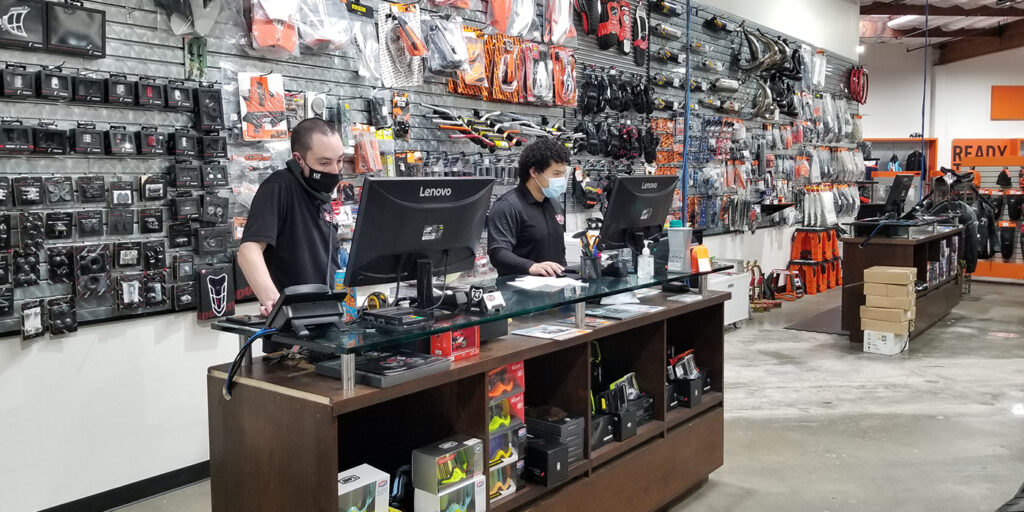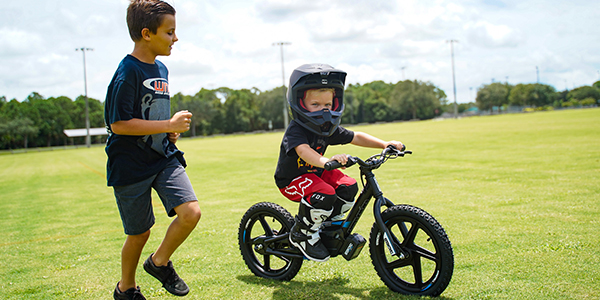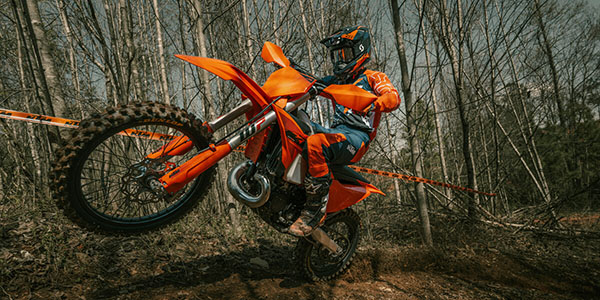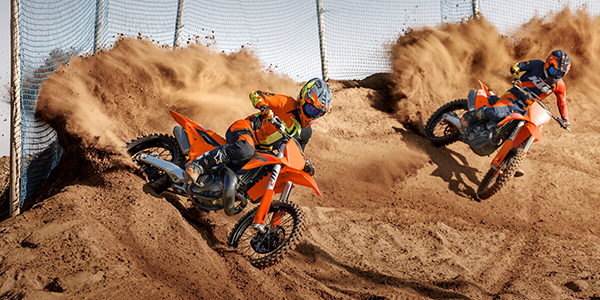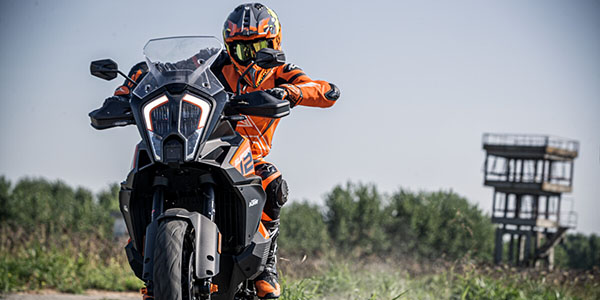The first couple of months of 2020 were filled with optimism. The U.S. powersports market was growing, and the outlook for the rest of the year seemed bright.
Then, the pandemic spread across the nation. In its wake were lockdowns, factory closures, product shortages and recession in many parts of our country. Even so, dealers found ways to keep the doors open and connect with customers.
Dealers weren’t in this alone. Many OEMs did what they could do to help. For example, when the lockdowns started, KTM launched programs to keep their dealers in business.
“When we first went into the lockdown, we helped our dealers with a ‘white glove delivery program,’ and sidewalk delivery of parts and accessories,” explained Tom Moen, KTM marketing and group media manager. “We set up a social campaign for our dealers to let consumers know they were open and ready to help with parts, service or M/C purchases. Our dealers put in extra work helping their customers in difficult times. As a result, most dealers experienced unbelievable sales in all segments.”
Keeping Doors Open in California
Brad Clausen’s family has owned a successful motorcycle business in what is now Silicon Valley, CA, since 1979. His first job (at age 12) was cleaning the showroom. As the years went by, however, challenges arose. The dealership, The Motor Cafe, was leasing space, originally from a reasonable landlord. Unfortunately, the building came to be managed by a large, out-of-state leasing company who made escalating demands. Finding a location to buy in the immediate area, one of the most expensive in the country, was impossible, and moving more than one mile meant that Clausen would be out of his franchise area and lose his two OEMs.
In 2019, Clausen decided to make a major leap. He would end his contract with his two OEMs, franchise with Ducati and the KTM group and move a few miles south to Campbell, CA, where he had found a building that he could afford if he did all the renovations himself.
COVID-19 hit in the middle of the renovation. Clausen was able to keep the doors open (under California law, motorcycle dealerships are an essential business) but sales activity completely stopped. Luckily, there was enough service department work to keep all the wrenches on. “All of a sudden, there were no customers at all,” Clausen said. He had to lay off seven out of 19 employees. At one point, the internet and telephone provider cut off service, although Clausen was paying the bills. The landlord put a billboard sized FOR LEASE sign in front of the old building. One of the original OEMs ended the contract early.
Through it all, Clausen and his remaining employees persevered. “We put our story on Instagram and on our webpage. We worked hard to get a PPE loan,” he said. When one bank refused to assist with the loan, Clausen found another. “I found that business was good in outlying areas. We went three or four months with no business, but after inventory in the rural areas ran short and we advertised a tire sale, we started seeing people come through the door.”
Racing to the Finish Line in Florida
WMR and its CEO, Bob Brewster, is a powerhouse on the Florida coast, with three businesses under the same roof: a motorcycle dealership, a race shop specializing in suspension and tuning and a wholesale and retail machine shop, operating under the Nihilo trademark. Nihilo (part of a Latin phrase meaning something from nothing) occupies a separate section of the dealership building and manufactures race gear, including carbon fiber skid plates, specially designed brake pedals and titanium fork guard brackets.
Although WMR never had to close (under Florida law, transportation businesses stayed open) a lot of WMR’s publicity and marketing is built around racing, and there was no racing for several months in 2020.
WMR experienced a slowdown – then sales picked up. “People were sick of sitting around and wanted to get out and have some fun,” Brewster said. “People who never had a motorcycle before are buying, and enjoying motorcycling as a family. Actually, any kind of outdoor recreation – boats, motorhomes – is doing well.”
Once promoters figured out how to have a safe outdoor event, racing action picked up as well. “The races in the last four or five months have been record setting,” Brewster said. “We have had the biggest turnouts seen in recent years.”
Social Media is Key
One effect of the pandemic has been increasing use of the internet by all segments of the buying public for news, communication and information. As a result, KTM concentrated on helping dealers make a splash virtually. “We created social media posts that could be used by any dealer last year,” Moen said. “We created campaigns, plus tag names and tag lines. We also hired and implemented a social platform company, ‘Promobox,’ to help support our dealers on Instagram and Facebook.”
“When we became a new KTM dealer, we were asked to meet with Steve, our marketing guy,” Clausen said.“He explained how to create what we want to present as our story online, and gave me great examples. KTM talked about marketing and brought good information on how to do it.”
A problem many operations have is the inability to devote one full time employee to keeping up on internet coverage. Moen emphasized that this is false economy. “Social media is here now for the consumer and the more our dealers use it to tie into our marketing plan, the better we all will do.”
Ideally, the shop should post something interesting – race news, the Mike Hailwood special that just came in on trade, the best local places to ride – every day.
Bringing Customers In
Unless a dealer specializes in internet sales, the key to prosperity is to get customers in the door. After The Motor Cafe announced a tire sale, customers streamed in to buy tires, but did not leave without taking a good look at the new bikes on the showroom floor and the parts and gear on display. Many decided to buy a new or used motorcycle at the same time.
“Every person I bring through the door is a plus,” Clausen said.
Moen added, “I have always looked at it as my job (and everyone in the KTM company) to make consumers want to go see the product in the dealerships.”
Making Them Look
Unexpectedly, KTM found that last year was a great time to launch new products.
“Timing was in our favor. One example, we cobranded the STACYC for KTM and Husqvarna and launched it in May 2020. It was a huge success,” Moen said. “One of the largest growing segments last year was the youth and entry level segments. We launched the 390 Adventure in April, which opened up that entry/small displacement segment to customers of the KTM brand, another success. GasGas trials bikes and all new off road models were something we launched last year, at the worst time during the lock down, but we launched a new company and started a new dealer network and the new GasGas brand is also going strong. Consumers were looking for new products, wanting to ride and our dealers figured out how to work through the tough, new normal business way of life and are doing good.”
Moen continued, “We are making huge strides in creating a presence on the internet, and credit a lot of KTM’s recent success to our marketing strategy toward connecting consumers to our dealers.”
Clausen found that the move to Campbell, as difficult as it was, improved his business. “People are showing up just to look at the new facility. We needed to evolve, and the move gave us a chance for renovation. I have stationed staff close to the front door, so anyone who walks in gets an immediate greeting. We are selling brands that are hot.”
Thinking back over the last year, Brewster added, “We persevered and are doing well. That is what Americans do. We persevere.”

